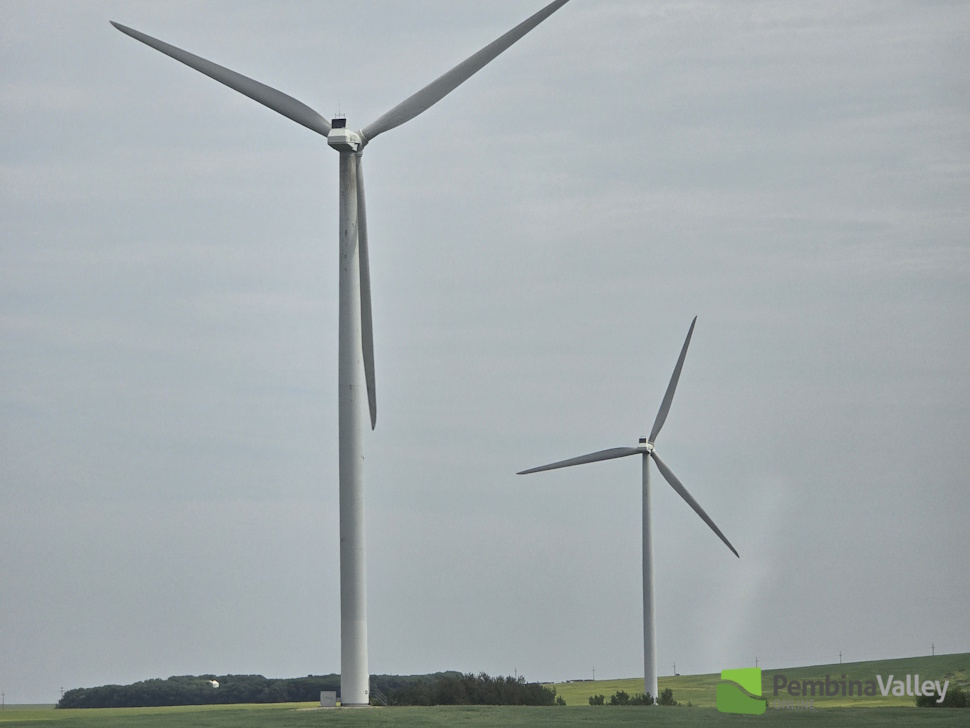Bats in North America are currently experiencing several challenges. The populations in Manitoba are no exception.
Although the discussion tends to centre on White-nose Syndrome (WNS), a fungal infection that has decreased some bat populations by 80% in some areas, there is also another threat to the mammals that does not receive as much attention — wind turbines.
Migrating bats
The story begins with the bat species in the province.
According to Dr. Craig Willis, a biology professor and the graduate program chair in biology at the University of Winnipeg, there are six species of bats in Manitoba.
The first three species are those that do what people may expect from bats: they hibernate for the winter.
“They go into a cave or an abandoned mine or some other hole in the ground,” says Dr. Willis. “They go in in September and they won't come out until [the middle of April] and over the next six weeks or so, they trickle out of hibernation and then they'll move to places like people's attics and barns or hollow trees for the summer, and that's when they're eating tons of insects.”
The next three species of bat in the province migrate.
“Our other three species fly south for the winter,” he says. “We're not totally sure how far they go, but probably far enough that they can still hibernate in a tree for a couple weeks at a time. Most of those bats would probably see a little bit of snow at least, but nothing like what they experience here in Manitoba.”
A hazard in the night
For Willis and his team of researchers, although they examine both types of bats, the second group is of particular interest when it comes to their interaction with wind turbines.
"Wind energy causes the mortality of a lot of animals. It kills a lot of bats across North America, and so [we] try to understand the impact of that issue for bat populations, why bats are showing up at turbines and getting killed, and how we can solve that issue.”
Dr. Willis says that one thing the public could do to help reduce the effect of the wind turbines on bats is to “ask the government to bring in some better guidance for wind energy operators for wind energy companies for how they can run their facilities in a way that can really minimize what's happening to bat populations.”
“That's actually a really easy fix and a much less costly fix than people might think,” he says.
“Solving White-nose Syndrome for our hibernating bat species is incredibly hard, but solving wind turbine mortality for our migratory species is much easier because almost all of that mortality happens during only a couple of months in the fall, and it only happens at night.”
Related stories:
- Here’s why it’s a good time to remember that pollinator gardens still matter
- Have you met the seasoned wildlife biologist behind Winkler’s nature haven?
According to Dr. Willis, the destructive occurrence also only happens when it’s “not especially windy” anyway.
“If we can work with companies on a strategy to adjust how they operate in times when we know bats are going to be active and attracted to the turbines and getting killed, we can go a very long way to solving that environmental problem,” he says.
“It’s a big deal because these three migratory species are being considered for endangered species listing by the federal government right now, and if that happens, it's going to become even more important for us to protect their populations.”
Other ways to help
Community members can also be a help to bats by participating in the Batwatch website, which collects information about bat colonies across Manitoba.
“It’s a great citizen science opportunity, where folks can report their observations of bats, especially if they know where a colony is,” says Dr. Willis.
“Funding is awfully tight for everyone doing science these days. In the past, a lot of our funding in my lab actually came from the US Fish and Wildlife Service. That's no longer happening, so we're relying more and more on citizen science.”
Dr. Willis says that if people have a bat colony on their property or know where one is, they are invited to visit the website to submit the information.
“That's incredibly valuable information,” he says.
To learn more about how to protect the province’s bats, visit Batwatch.
